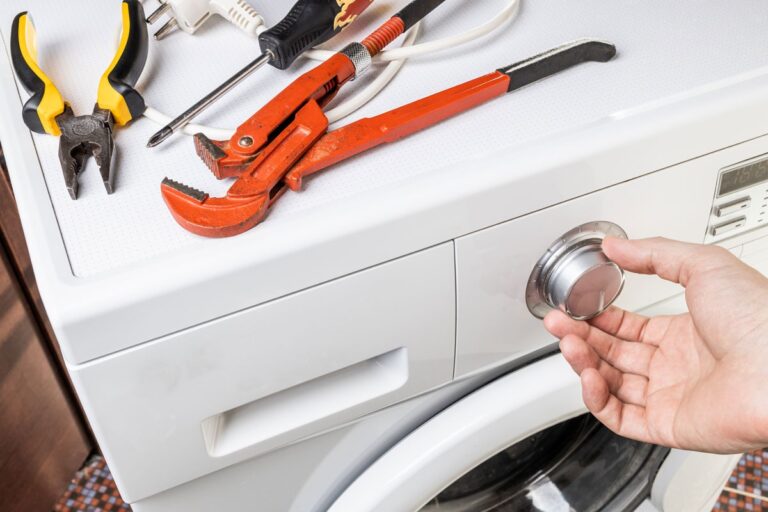The Ultimate Guide to Lawn Mowing for Beginners
Maintaining a healthy, green lawn starts with learning the basics of lawn mowing. For beginners, understanding the right techniques, tools, and timing can make a big difference in how your yard looks and grows. This ultimate guide to lawn mowing for beginners will walk you through everything you need to know, from choosing the right mower to mastering mowing techniques, including how to choose the right robot mower for hassle-free lawn care.
1. Choosing the Right Lawn Mower
The first step in your lawn mowing journey is picking the right mower. The type of mower you need depends on your yard size and terrain:
- Push Mowers: Perfect for small, flat lawns. They’re lightweight, eco-friendly, and affordable.
- Self-Propelled Mowers: Great for medium-sized lawns or slightly sloped areas. They require less effort as they move forward on their own.
- Riding Mowers: Ideal for large lawns. These allow you to sit and steer, making mowing quicker and less tiring.
- Electric vs. Gas Mowers: Electric mowers are quieter and eco-friendly, while gas mowers are more powerful for tough jobs.
When choosing a mower, consider maintenance, ease of use, and your budget.
2. Understanding Grass Types and Mowing Heights
Different grass types need different mowing heights to stay healthy. Knowing your grass type helps you mow correctly:
- Cool-Season Grasses (like Kentucky Bluegrass or Fescue): These thrive in cooler climates and should be cut to 2.5 to 4 inches.
- Warm-Season Grasses (like Bermuda or Zoysia): These prefer warmer temperatures and should be kept at 1 to 3 inches.
Pro Tip: Never cut more than one-third of the grass blade at a time. Cutting too short weakens the grass and can lead to brown patches.
3. Preparing Your Lawn for Mowing
Before you start mowing, it’s important to prepare your lawn:
- Clear Debris: Remove sticks, rocks, and toys that can damage your mower or cause injury.
- Check for Wet Grass: Avoid mowing when the grass is wet. Wet grass clumps, leading to uneven cuts and potential mold.
- Inspect the Lawn: Look for obstacles like sprinkler heads or uneven ground that could damage your mower or cause accidents.
4. Mowing Techniques for a Healthy Lawn
How you mow your lawn matters just as much as how often you do it. Use these techniques for a healthier yard:
- Change Your Mowing Pattern: Mow in different directions each time. This prevents soil compaction and encourages upright grass growth.
- Overlap Slightly: When mowing, overlap each pass to avoid missing spots and leaving lines.
- Keep Blades Sharp: Dull blades tear the grass, making it more prone to disease. Sharpen your blades regularly for clean cuts.
5. Grass Clippings: To Bag or Not to Bag?
One common question is whether to bag your grass clippings or leave them on the lawn:
- Leave Clippings (Mulching): This helps return nutrients to the soil, keeping your grass healthy and reducing the need for fertilizer.
- Bag Clippings: If your grass is too long or wet, bagging prevents clumps that can smother your lawn.
In most cases, leaving clippings on the lawn (known as mulching) is beneficial for the grass.
6. Mowing Frequency and Timing
Knowing when and how often to mow is key to a lush, green lawn:
- Mow Regularly: Mow your lawn once a week during peak growing seasons. In slower growth periods, you can reduce the frequency.
- Best Time to Mow: Late morning or early evening is ideal. Avoid mowing during the heat of the day, as it stresses the grass.
Pro Tip: Keep an eye on your grass growth rather than sticking to a strict schedule. Growth rates can vary based on weather and season.
Read more : Free Zone vs. Mainland
7. Safety Tips for Lawn Mowing
Lawn mowing can be dangerous if you don’t take proper precautions. Here’s how to stay safe:
- Wear Protective Gear: Always wear closed-toe shoes, gloves, and eye protection to shield yourself from debris.
- Keep Children and Pets Away: Make sure the area is clear before you start mowing.
- Handle Fuel Safely: If you’re using a gas mower, refuel only when the engine is cool to avoid fire risks.
8. Maintaining Your Lawn Mower
A well-maintained mower makes lawn mowing easier and more effective. Follow these maintenance tips:
- Clean After Each Use: Remove grass clippings from the blades and under the deck to prevent rust and buildup.
- Check Oil and Fuel Levels: Regularly inspect and refill as needed.
- Sharpen Blades: Sharp blades cut better and reduce stress on the grass. Aim to sharpen your mower blades at least once per season.
9. Common Lawn Mowing Mistakes to Avoid
Avoid these common mistakes to keep your lawn in top shape:
- Cutting Too Short (Scalping): This weakens the grass and makes it more vulnerable to weeds and disease.
- Mowing with Dull Blades: Dull blades tear grass instead of cutting it cleanly, leading to ragged edges.
- Ignoring the One-Third Rule: Cutting off too much at once stresses the grass and can lead to brown spots.
10. Seasonal Lawn Mowing Considerations
Your lawn mowing routine should change with the seasons:
- Spring: Start mowing as soon as the grass begins to grow. Gradually lower the cutting height as the season progresses.
- Summer: Keep your grass slightly taller to protect it from the heat and retain moisture.
- Fall: Continue mowing until growth slows. Lower the mower blade slightly for the final mow to prepare for winter dormancy.
Conclusion
By following this ultimate guide to lawn mowing for beginners, you’ll be well on your way to maintaining a beautiful, healthy lawn. From choosing the right mower to mastering mowing techniques, the right approach makes all the difference. Remember, consistent care, proper timing, and safe practices are key to successful lawn mowing. With these tips, even beginners can achieve a lush, green yard that’s the envy of the neighborhood!







